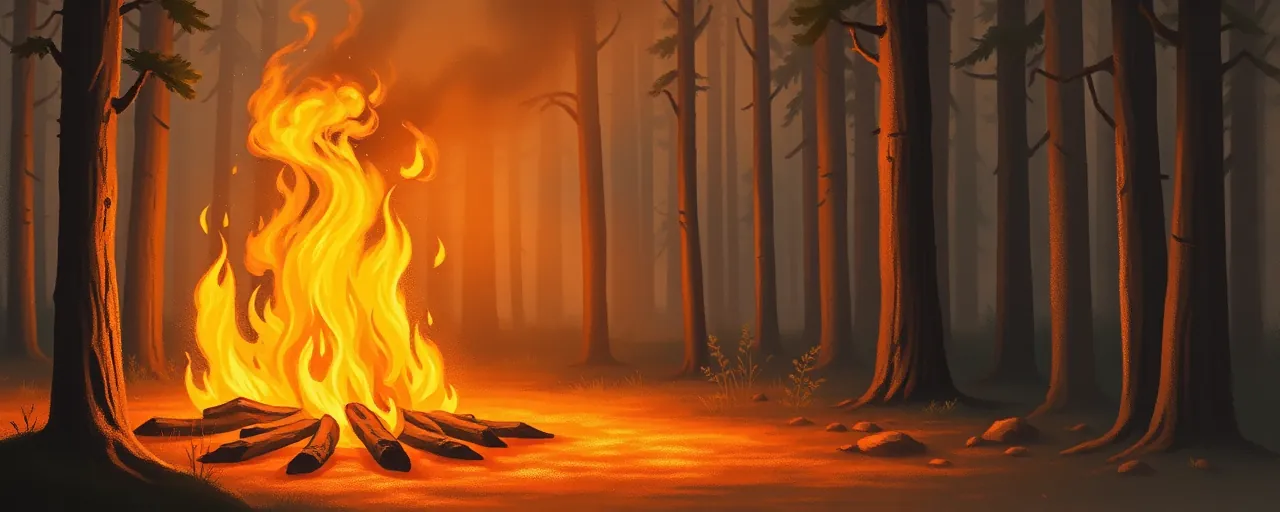A State on Edge
California's wildfire season looms like an uninvited guest, its arrival unpredictable yet inevitable. This year, blazes have already scarred communities, leaving behind a trail of destruction and a pressing question: how can the state act faster to prevent catastrophe? A new online permitting system, rolled out after a state of emergency declaration, promises to slash approval times for forest and vegetation management projects to as little as 30 days, a sharp cut from the year-long waits of the past.
The initiative, driven by the urgent need to reduce fuel loads before peak fire season, builds on years of investment in wildfire resilience. Since 2020, California has poured over $4 billion into prevention, response, and forest health projects, treating nearly 1.9 million acres with measures like prescribed burns and fuel breaks. Yet, with flames outpacing efforts, the state is betting on speed to tip the scales.
This streamlined process is more than a bureaucratic tweak; it’s a response to a hotter, drier climate that has turned forests into tinderboxes. But as the state races to clear vegetation and harden communities, questions linger about balancing rapid action with environmental protections. The move has drawn both praise and scrutiny, reflecting the complex stakes in California’s fight against fire.
Cutting Red Tape, Keeping Safeguards
At the heart of the new system is the Statewide Fuels Reduction Environmental Protection Plan, designed to ensure projects move quickly without sidelining environmental concerns. Applicants must follow best practices to protect water quality, air, tribal cultural resources, and sensitive species. For example, fuel reduction projects near streams require buffers to prevent erosion, while work in sensitive habitats mandates pre-project surveys to avoid disrupting endangered wildlife.
Data backs the urgency of these efforts. Treated areas, like the Loafer Creek Vegetation Management Project, slowed major fires in 2024, giving firefighters critical time to protect nearby towns. From 2021 to 2023, the state and its partners treated 730,000 acres in a single year, a scale unimaginable a decade ago. Supporters, including state foresters and local fire chiefs, argue that faster approvals will expand this progress, preventing the kind of megafires that have leveled entire communities.
Yet not everyone is convinced. Environmental advocates, including groups like the Sierra Club, warn that loosening regulations, even temporarily, risks long-term harm. They point to potential impacts on habitats for species like the California spotted owl, already stressed by drought and fire. While the state insists safeguards are robust, critics call for more transparency and monitoring to ensure promises hold up on the ground.
Prescribed Fire and Indigenous Wisdom
Beyond permits, California is doubling down on prescribed and cultural burns, practices with roots stretching back thousands of years. Indigenous communities have long used controlled fires to manage landscapes, reduce fuel, and promote biodiversity. Recent studies show these burns can cut wildfire severity by over 60% in treated areas, while also reducing smoke emissions compared to uncontrolled blazes.
The state’s push includes expanding training for burn practitioners and engaging tribes to lead cultural fire projects. A virtual briefing on April 11 gathered input from Native leaders and fire experts to shape these efforts. For tribes, it’s a chance to restore traditional knowledge and generate income, but challenges like funding and public skepticism about controlled burns persist.
Scientific evidence supports the approach. During the 2020 wildfire season, areas treated with prescribed fire produced 14% less smoke than untreated zones. Scaling up could halve emissions from catastrophic fires, a boon for air quality. Still, the practice requires careful planning to avoid unintended escapes, a concern for communities scarred by past fire seasons.
Tech and Grit on the Frontlines
Technology is transforming California’s wildfire strategy. AI-powered systems like ALERTCalifornia scan landscapes 24/7, spotting smoke with 99% accuracy, often before emergency calls come in. Drones map fires in real time, guiding crews through treacherous terrain, while low-cost sensors detect early flames in remote areas. These tools, paired with the world’s largest aerial firefighting fleet, give responders an edge against fast-moving blazes.
Community efforts are just as critical. In places like Montecito, neighborhood programs for brush removal and evacuation planning saved homes during the 2017 Thomas Fire. Statewide, CAL FIRE has invested $450 million in 450 prevention projects since 2019, including inspections of over 250,000 homes annually to ensure defensible space. Pilot programs in Shasta and San Diego counties are retrofitting low-income homes with fire-resistant materials, a model set to expand.
But technology and hardening only go so far. Homeowners often struggle with the cost of mitigation, and not all communities have the resources to organize like Montecito. Rural areas, in particular, face gaps in funding and access to tech, highlighting the need for equitable solutions.
Weighing the Path Forward
California’s fast-track permitting system reflects a broader truth: wildfires demand bold, swift action. The state’s $4 billion investment, paired with cutting-edge tech and community resilience, has measurably slowed fires and saved lives. Yet the scale of the crisis, fueled by climate change, tests even the most ambitious plans. Streamlining has unlocked progress, but environmental trade-offs remain a sticking point for those who fear long-term costs.
As peak fire season nears, the state faces a delicate balance. Accelerating projects while protecting ecosystems will require rigorous oversight and public trust. For now, California’s blend of speed, science, and community grit offers a fighting chance against the flames, but the work is far from done.
